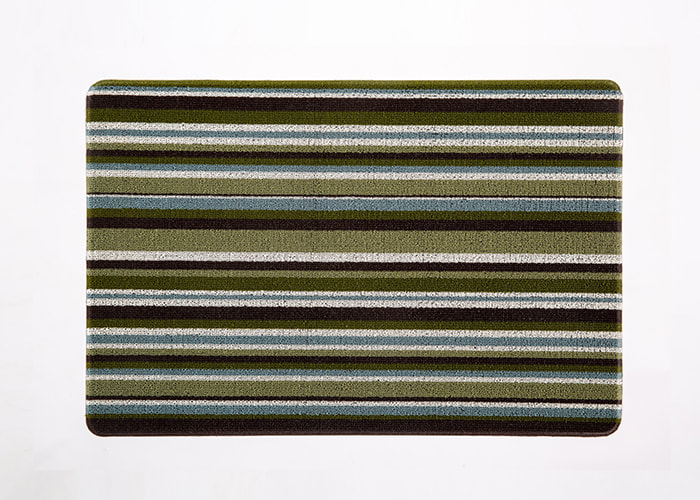Tufted Mats Deliver Cost Efficiency and High-Quality Design at Scale
As demand for stylish, functional floor coverings continues to rise, manufacturers and consumers alike are turning to one solution that offers both aesthetic appeal and economic efficiency: Tufted Mats. Unlike woven or hand-knotted alternatives, Tufted Mats benefit from high-speed production methods and optimized material usage, making them an option for mass-market applications without sacrificing design quality.
A Revolution in Rug Manufacturing
The traditional techniques of carpet making—such as Wilton weaving, Axminster construction, or hand-knotting—are known for their craftsmanship but also for their labor intensity and high production costs. In contrast, Tufted Mats are created using advanced tufting machines that insert yarn into a backing fabric at an impressively rapid pace. This allows manufacturers to produce mats much faster and at a fraction of the cost compared to conventional methods.
The production efficiency of tufting machines means that Tufted Mats can be manufactured in high volumes with consistent quality. This scalability reduces unit costs dramatically, enabling suppliers to offer competitive prices while still maintaining robust profit margins. It also opens the door for more frequent design updates, giving retailers the flexibility to meet changing market tastes.
Better Material Utilization = Less Waste
One of the significant advantages of Tufted Mats is their efficient use of materials. Woven rugs often involve overlapping or redundant yarn paths to maintain pattern integrity and strength. In contrast, tufting directs the yarn exactly where it needs to go, minimizing excess and reducing waste.
This efficiency means that the same amount of yarn can cover more surface area, significantly lowering raw material costs. For eco-conscious brands and consumers, this aspect of Tufted Mats supports sustainability goals by decreasing production waste and reducing the environmental footprint of manufacturing processes.
Competitive Advantage for Manufacturers
For manufacturers, the shift to Tufted Mats is not just a matter of cost—it’s a strategic business move. By investing in tufting equipment, companies gain the ability to rapidly respond to market demand and customization requests. Whether fulfilling a large commercial order or producing trend-specific retail collections, the speed and versatility of Tufted Mats production offer a clear competitive edge.
Moreover, tufting technology supports a wide range of pile heights, textures, and patterns, making Tufted Mats suitable for various applications—from luxurious area rugs in homes to functional mats in offices and commercial spaces. This adaptability further enhances their appeal across customer segments.

Affordable Quality for Consumers
Consumers benefit directly from the cost-efficiency of Tufted Mats. Lower production costs mean more affordable retail prices without compromising on appearance or durability. In fact, many Tufted Mats are designed with stain-resistant, fade-resistant, and moisture-resistant properties, making them ideal for high-traffic areas and households with pets or children.
Because Tufted Mats come in a wide array of colors, textures, and styles, consumers can easily find options that match their interiors without overspending. The balance of design, durability, and affordability makes Tufted Mats a smart investment for homeowners and commercial designers alike.
Bridging the Gap Between Mass Production and Custom Design
One of the enduring myths about mass-produced floor coverings is that they lack uniqueness or character. However, Tufted Mats challenge this assumption. Thanks to advancements in digital design and color injection technologies, tufted mats can now mimic the intricate look of hand-made rugs while offering the consistency and affordability of automated production.
Designers can work with manufacturers to create customized Tufted Mats for specific projects, including hospitality venues, retail spaces, and branded environments. The rapid turnaround and low prototyping costs make tufted mats ideal for custom flooring solutions that don’t break the budget.
Supporting a Circular Economy
As industries strive to reduce their ecological impact, Tufted Mats present an opportunity to support circular economy models. With their efficient material usage and potential for recycling, tufted products are easier to incorporate into closed-loop manufacturing systems. Additionally, many Tufted Mats are made using synthetic fibers like nylon or polyester, which are more readily recyclable than natural materials used in traditional rug-making.
Some manufacturers are even introducing Tufted Mats that utilize recycled content or biodegradable backings, further aligning with sustainability goals and green building certifications. For buyers concerned with environmental impact, this adds another layer of value to an already cost-effective product.
In the modern marketplace, cost-efficiency and quality are no longer mutually exclusive. Tufted Mats prove that high-speed production and responsible material use can deliver aesthetically pleasing, durable, and affordable floor coverings. Their advantages—from faster production and better material yield to versatile design capabilities—make them a smart choice for both producers and consumers.
As the flooring industry evolves to meet rising demand and environmental concerns, Tufted Mats stand out as a practical, scalable solution that doesn’t compromise on style or performance. Whether used in homes, offices, or commercial environments, Tufted Mats are redefining what it means to combine efficiency with elegance.


.jpg)
.jpg)